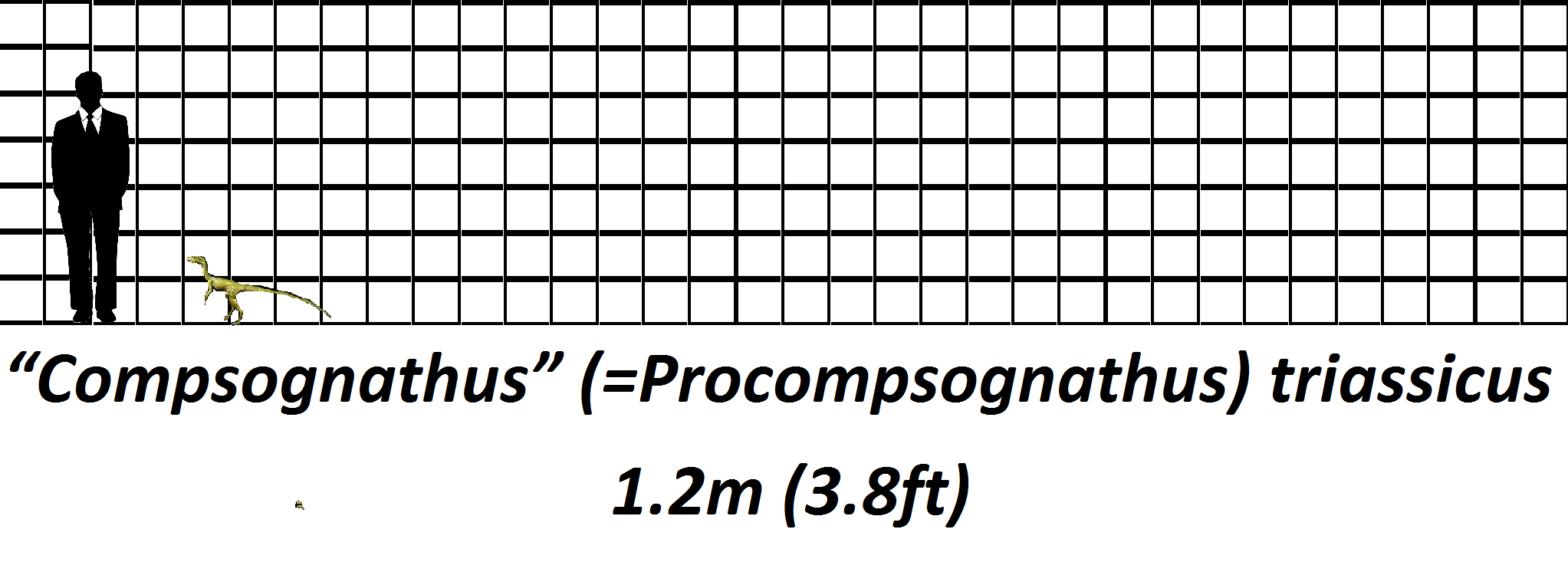Deviation Actions
Description
Animal Description: “Compsognathus” ( ![]() rocompsognathus) triassicus is a small omnivorous theropod dinosaur from the Late Triassic period of Europe. It was first named and described by Eberhard Fraas in 1913 based on a badly crushed skeleton. It lived 210 million years ago in the dry inlands of Triassic Germany. Procompsognathus is an extremely primitive dinosaur, coming from a time when many of the major dinosaur groups hadn’t evolved yet. Also being one of the smallest dinosaurs, an adult Procompsognathus only grew up to 3ft long and weighed only two pounds.
rocompsognathus) triassicus is a small omnivorous theropod dinosaur from the Late Triassic period of Europe. It was first named and described by Eberhard Fraas in 1913 based on a badly crushed skeleton. It lived 210 million years ago in the dry inlands of Triassic Germany. Procompsognathus is an extremely primitive dinosaur, coming from a time when many of the major dinosaur groups hadn’t evolved yet. Also being one of the smallest dinosaurs, an adult Procompsognathus only grew up to 3ft long and weighed only two pounds.
History with InGen/Masrani: In a massive operation to obtain as much viable DNA as possible, amber was collected from many mines all over the world. Not all amber was found by InGen themselves however, as many potentially viable specimen were bought from gift shops and jewelry stores. One piece bought from a small family owned store in Germany contained what the owner thought was a leaf. Upon closer inspection, only after the DNA was extracted, was it revealed to be animal tissue. As there was no way to track from what mine the source came from, the scientists had no idea what time period the clone came from. Once the first prototypes were developed, they were labeled “Compsognathus” because of the superficial resemblance to the famous dinosaur. This proved to be incorrect later as a famous paleontologist Robert Burke analyzed a dead specimen and found it to belong to the species Procompsognathus triassicus. 43 individuals were successfully cloned sometime between 1986 and 1991. Procompsognathus was deemed too small and hard to control and was not planned for phase 1 of Jurassic Park, but 28 individuals were discovered on the island during the 1994 clean up. This was concerning, as this meant the species was able to travel undetected in many shipping vessels.
Because of their large numbers and difficulty to catch, compies were allowed to wander Nublar during construction and management of Jurassic World and were one of the original eight species promoted by Masrani Global. Special pest management measures ensured that the animals would not interact with guests or staff.
DNA makeup: To make the cloning process faster and easier, Dr. Wu may have filled in gaps of newly cloned dinosaurs with DNA from “Velociraptor” (![]() einonychus) antirrhopus nublarensis. The similar inconsistences between the two animals and their extinct counterparts supports this. Both clones have leathery skin and pronated wrists unlike the real animal. If this is true, DNA from Varanus exanthematicus, Canis lupus familiaris, Dendrobates leucomelas, Gallus gallus, and Struthio camelus would also be present. Hyperolius viridiflavus DNA is also a possibility, though uncertain.
einonychus) antirrhopus nublarensis. The similar inconsistences between the two animals and their extinct counterparts supports this. Both clones have leathery skin and pronated wrists unlike the real animal. If this is true, DNA from Varanus exanthematicus, Canis lupus familiaris, Dendrobates leucomelas, Gallus gallus, and Struthio camelus would also be present. Hyperolius viridiflavus DNA is also a possibility, though uncertain.
Behavior: Procompsognathus are highly social animals that live in huge colonies of hundreds of individuals. They have no territory, being highly nomadic and despotic. Compies form relationships with each other through interactions and communication, often picking “friend” compies of which they will stick behind. There is no social hierarchy in the colonies, instead it is anarchic and unorganized. Infighting is common and mortality rates high in particularly large colonies, cannibalism in not unheard of. Due to the relatively small size of Isla Sorna and the ever growing population of compies, as food becomes scare increasingly desperate compies will mob and swarm large prey. Venom collected from eating local insects and plants can be harnessed by the compy to give large prey a slight calming effect allowing the compy swarm to eat it while it is still alive. Compies are omnivores and will eat almost everything, including feces and month old carrion. Compies do not fear humans and will kill and eat humans if a large enough mob is formed. They can be found all over Los Cinco Muertas Island chain, Isla Nublar, and sightings have even been made on the mainland as far north as Mexico and as far south as Columbia.
Sexual Dimorphism: There is no sexual dimorphism observed in the cloned Procompsognathus.
Life Cycle: Procompsognathus is mostly polygynous, one male mates with several females and vice versa. Group mating is common in large colonies, mobs of males may descend upon a female in heat and consistently mate with her several times to insure the highest chance of a successful reproduction. The female then lays many eggs sired by many males, this is beneficial to the female because if a male believes her infants to be of someone else’s seed he will commit infanticide to bring her back into heat. Once she lays her eggs, she and several females will care for each other’s eggs in a large nursery. There is no bonds between a mother and her specific children, only between her and the colonies eggs as a whole. After the dozen or so eggs from a brood hatch, the fully functioning infants become a part of the colony instantly and are not cared for by their specific mother. While compies only live around a year in the wild, a female can have over a hundred children in a lifetime.




































